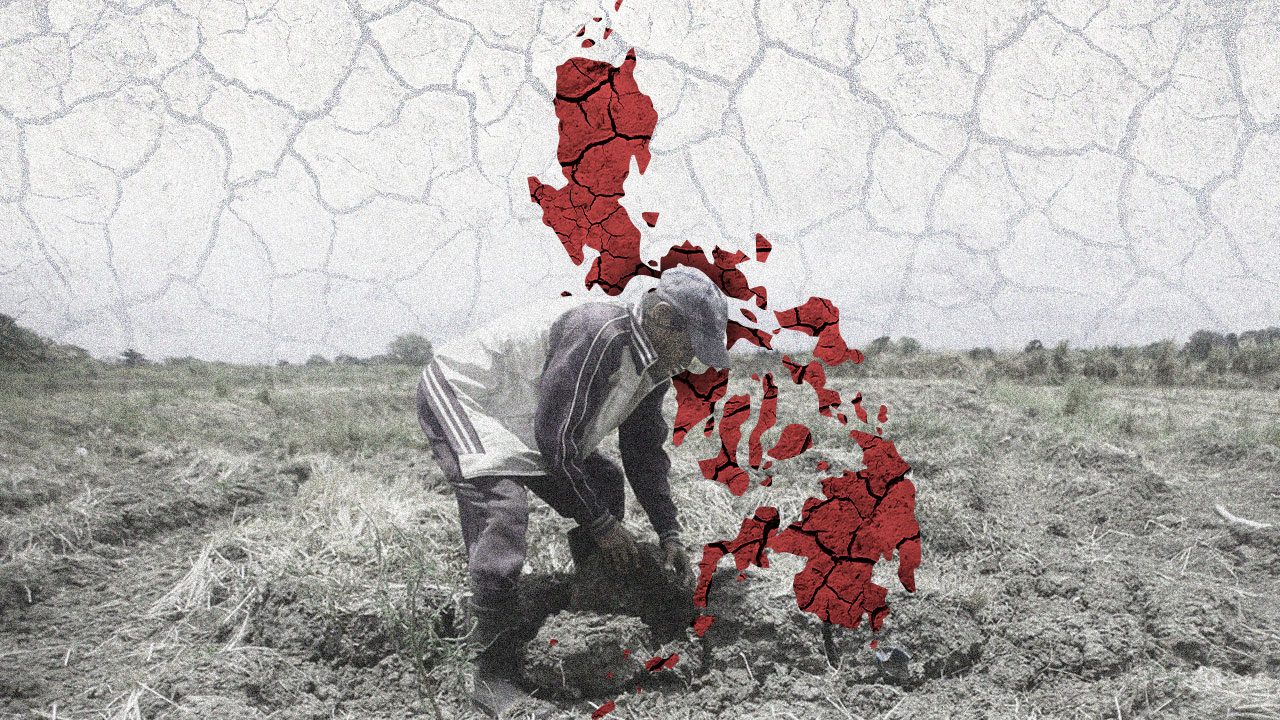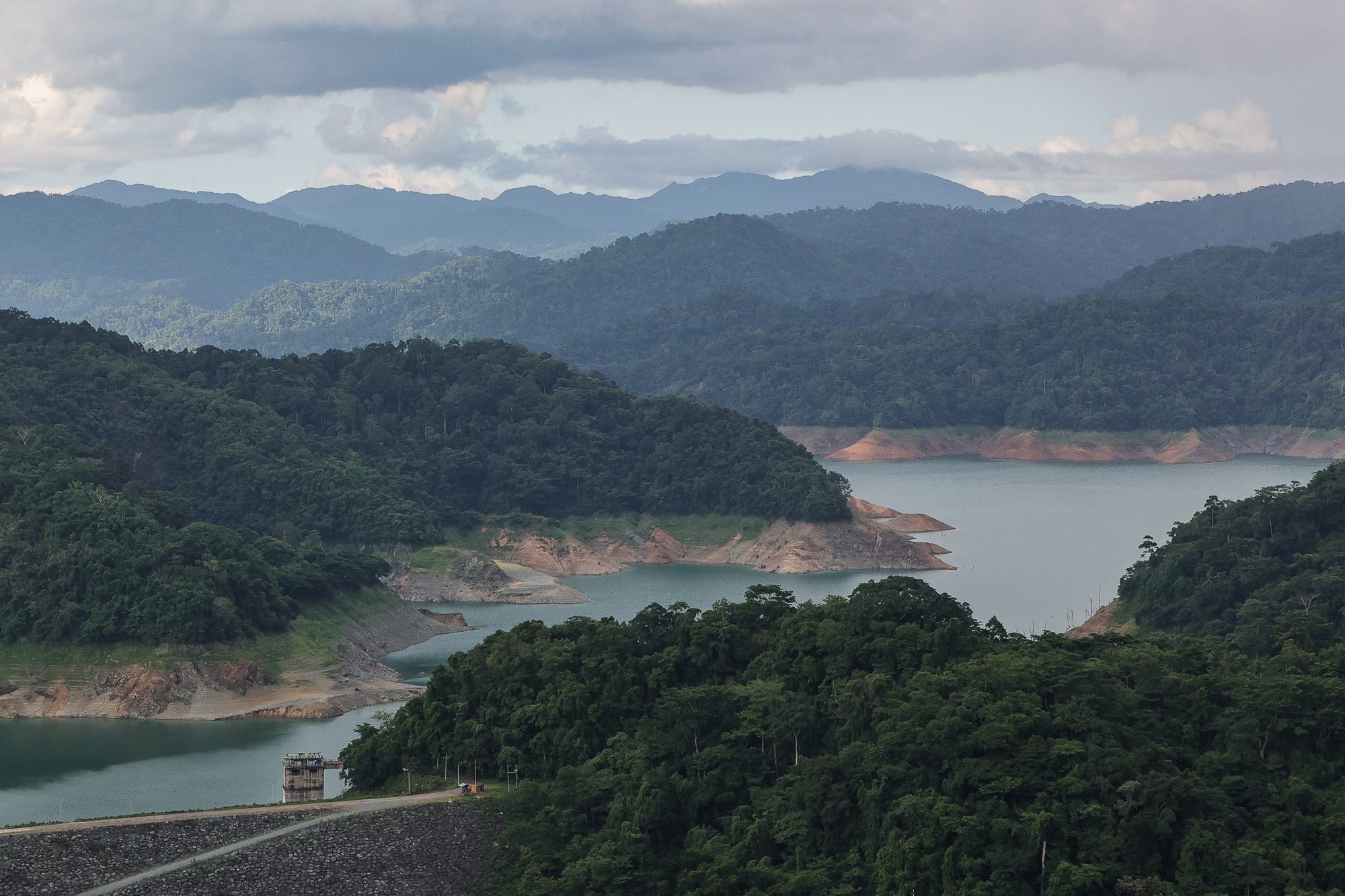SUMMARY
This is AI generated summarization, which may have errors. For context, always refer to the full article.

MANILA, Philippines – Filipinos may be enjoying the cool weather brought by the amihan in the early weeks of the new year, and water supply is at the moment showing no signs of decline that could alarm the majority of the population.
Because of these, it could easily slip people’s minds that a strong El Niño is ongoing.
El Niño has been underway since July 2023. In its latest advisory, the Philippine Atmospheric, Geophysical, and Astronomical Services Administration (PAGASA) reminded the public that a strong El Niño would likely persist until February, and that global climate models predict it would continue until May.
El Niño has historically impacted livelihood and health by causing extreme droughts and severe flooding in parts of the world. In an agricultural country like the Philippines, where dry spells and droughts are expected, this could mean crop failures affecting food production.
Last December, President Ferdinand Marcos Jr. said in a media interview in Nueva Ecija that securing water for farmers is the administration’s top priority during the 2023-2024 El Niño.
“We’re making sure that our farmers have water, first and foremost, so we will have food supply that’s good and will continue to increase our production of agricultural products,” Marcos said in Filipino.
That the weather is cool and water supply stable are beside the point. The trend in the last months showed less rainfall and warmer temperatures across the country.
By the end of January, PAGASA’s outlook shows potential drought in the Ilocos Region, parts of Cordillera and Central Luzon, and other places in Luzon. Metro Manila, Rizal, and Aurora, among others, are expecting dry spells.
This trend will culminate in April. By then, 56 areas from Luzon and parts of the Visayas and Mindanao may face potential drought. Mindanao is expecting mostly dry spells.

El Niño is a weather phenomenon that occurs when the ocean surface temperatures unusually warm in the eastern tropical Pacific Ocean. Normally, trade winds bring warm waters from east to west. But during El Niño, winds weaken and warm waters are pushed back east. This increases storms and flooding in the Americas.
The opposite happens in Southeast Asia and Australia. Because of colder ocean temperatures, the chances of a low pressure area forming goes down. Thus, less rainfall and drier conditions.
The last time this happened was in 2018 and 2019. El Niño is estimated to happen every two to seven years. In 2019, the total agricultural losses from typhoons and El Niño amounted to P16 billion.
How is the government preparing?
With the El Niño expected to persist until May, how is the country preparing for it?
In December, the President ordered the creation of Task Force El Niño, led by the National Disaster Risk Reduction and Management Council.
The key priority issues in the El Niño national action plan are water, food, power, health, and public safety. These had been delegated to concerned agencies such as the Department of Agriculture (DA) and the Department of Environment and Natural Resources (DENR).
Overall, the plan seeks to “increase resiliency of communities.”
“What the El Niño action plan team is now doing is to minimize any impact on water, electricity, food, and health,” DENR Undersecretary Carlos Primo David, who also heads the Water Resources Management Office, told Rappler.
“These indirectly relate to jobs and commodity prices.”
Last December, Congress approved the proposed P5.768-trillion budget for 2024, which is 9.5% higher than the 2023 budget. Concerned agencies got additional budget supposedly to weather El Niño. The budget for the National Rice Program was increased to P30.8 billion, while the government also allotted P31.18 billion for irrigation projects.
More irrigated lands would mean better food production, said House Speaker Martin Romualdez in a statement last December. Romualdez was urging the National Irrigation Administration “to build more dams, water reservoirs and solar irrigation systems,” in preparation for El Niño.
Do we have enough food?
Unfortunately, the government still doesn’t have the data on how much damage to agriculture and fisheries has been incurred due to the current El Niño, according to DA Secretary Francisco Tiu Laurel Jr.
Laurel, in a Malacañang briefing on January 16, said that based on their meetings at the Palace in 2023, the DA is set to create more water impounding projects and explore building solar-powered irrigation in certain areas.
Of course, when Filipinos talk about food, rice immediately comes to mind.
While Laurel assured the media that the country still has healthy stocks of rice as of January, the DA would still have to “manage the situation” and look at it “on a day-to-day basis.”
“But as far as the price is concerned, it’s hard to predict,” Laurel said in a mix of Filipino and English. “The problem is that the world price is going up because of the El Niño.”

For the short term, the DA is looking at buffer stocking seeds of rice, corn, and other high-value crops. In the immediate future, the DA wants to lessen grain imports by investing in post-harvest facilities that could supposedly recover 23 days of rice for the whole nation.
These facilities are part of the agriculture department’s three-year plan estimated to cost P93 billion.
Because of warmer ocean temperatures during El Niño, fisherfolk may anticipate occurrences of red tide. This could contaminate shellfish, cause fish kills, and affect people’s health.
According to the national plan, the DA’s Bureau of Fisheries and Aquatic Resources will “continue their fish disease surveillance and red tide monitoring activities, and provide technical assistance to [fisherfolk] on fish disease detection and treatments.”
Do we have enough water?
As of Friday, January 19, Angat Dam, which provides water to Metro Manila, is at 212.71 meters – considered the normal high-level elevation.
“For Metro Manila, since we’ve made sure that Angat is full at the end of the year, we have enough water until May,” David told Rappler. “Other cities have sources that are less stable.”
In 2023, only 11 tropical cyclones entered the Philippine Area of Responsibility – half the usual number that the country is used to.

David said that despite the less than normal number of typhoons, the country had been fortunate to have an active northeast monsoon from last December to the present, which filled the dams. La Mesa Dam is at 79.62 meters, considered within normal operating levels, while Ipo Dam is at 98.34 meters – slightly below the normal threshold of 101 meters.
But it’s a different story in other areas.
In Bukidnon, for example, deep wells and communal faucets are already drying up due to El Niño, and water rationing has started. Based on PAGASA’s outlook, Bukidnon was supposed to experience dry conditions a bit later, by the end of February.
Thinking long term
Civil Defense Administrator Ariel Nepomuceno said in a radio interview on January 16 that a whole-of-nation approach would work best, given some realities on the ground that stick out of the projections.
“Ang magandang attitude, isipin na lang natin siguro dapat buong Pilipinas na eh,” Nepomuceno said. “Kasi ‘yung Bukidnon nga po wala nga ngayon sa projection ng January ‘yan.“
(The best attitude is to already take into consideration the entire Philippines. Bukidnon is not even within the projection for January.)
Moreover, aside from short-term solutions such as utilizing standby deep wells and conducting rotational water delivery every time dry spells are predicted, Nepomuceno said it’s time the country gets serious in planning ahead for such circumstances.
The national action plan of the El Niño team, for one, can be used to demand accountability if plans are being implemented, he said.
Some of these action points are:
- Metropolitan Waterworks and Sewerage System to fast-track the creation of new water sources, such as the New Wawa Dam and Kaliwa Dam
- National Grid Corporation of the Philippines to address right-of-way issues that cause delays in the completion of energy projects
- Department of Agriculture to regularly document effects of El Niño on crops, livestock, poultry, and fisheries
- National Water Resources Board to create groundwater management plans that also take into account the effects of climate change to the sustainability of resources
- National Irrigation Administration to pursue the Bayabas Small Reservoir Irrigation Project
“While we’re being pressured to implement short-term solutions…let’s not neglect medium to long-term solutions because this will just repeat and we’ll be like sitting ducks if we don’t address this,” Nepomuceno said in Filipino. – Rappler.com
1 comment
How does this make you feel?






















![[Vantage Point] Possible end to water row averts taps drying in Cagayan de Oro, for now](https://www.rappler.com/tachyon/2024/03/vantage-point-cdo-water.jpg?resize=257%2C257&crop=157px%2C0px%2C669px%2C669px)




DA Secretary’s highly noted statement, “But as far as the price is concerned, it’s hard to predict,” Laurel said in a mix of Filipino and English. “The problem is that the world price is going up because of the El Niño.” Given all the data and the expertise of statisticians in both the DA and PSA, he could not predict. It is time for DA Secretary Francisco Tiu Laurel Jr. to ask for help from the experts.